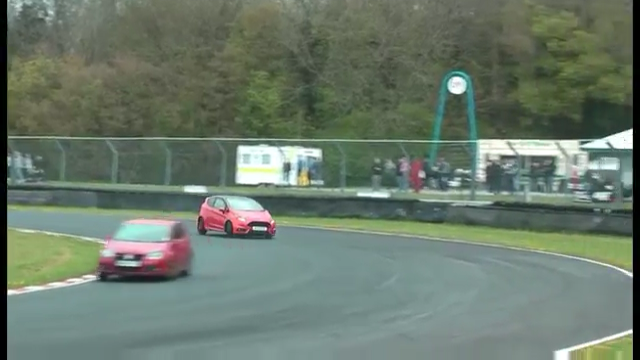It’s always a challenge to find the limit, even at a sanctioned track day. With the benefit of a little experience, one knows how to prevent an accident before it happens, as there are often plenty of warning signals before there’s nowhere to head but the ditch. In this instance, plenty of green drivers take agricultural excursions, lose the rear under the brakes, or simply ask too much of the car or themselves. As a lesson to all, some of these mistakes could and should have been avoided.
Generally speaking, adding steering lock well-past the apex is a major no-no, and it only leads one into a spin. With a ton of lateral force still imposed upon the car, running that wide with much steering lock on will rotate the machine once the rears hit dirt, grass, or a slippery surface. However, this typically happens in a subtle fashion; carrying in a bit too much speed and finding the front tires no longer respond. In these situations, rather than trying to pursue momentum, a momentary lift of the throttle is often enough to put some weight on the front tires and have the car regain its ideal line. The first black BMW M3 was unfortunately a little too courageous and, like pursuing an argument with a stubborn relative at a drunken Christmas dinner, would’ve been better to avoid the issue entirely.

The driver of the black M3 must’ve compounded his fear as he looked directly at the oncoming traffic.
Sometimes, understeer is terminal and there’s little one can do about it. Though more often seen in very wet conditions or on snow, the driver of the red Fiesta (00:45) finds themselves in this position, seemingly forgotten to brake entirely. There shouldn’t be any more steering lock on well past the apex, but in the case of the Fiesta, he has the tires nearly perpendicular to the road on corner entry! That’s not subtle understeer, that’s suicidal, and despite being a light car, the brakes still need to be used occasionally.
Losing the front is probably more common among drivers on their first or second track days, but a TVR isn’t going to behave like most cars driven by amateurs. Carrying the brakes in a little too hot results in a quick rotation and a nudge against the barrier. Thankfully, TVRs may be known for being unwieldy, but they’re also built to take a pummeling, at this particular Tuscan walks away without much damage.
Once the car has let go, there’s a certain art to keeping it “within the lines.” However, once it’s on the grass, it’s very hard to determine just how much one can get away with. Sometimes, an apt driver can compensate for the changing levels of grip and keep the car pointed in the right direction, as seen with the silver E36 (06:58), which manages to hold an impressive angle on the grass and return to the circuit without losing much speed or looping it.
It’s always a balancing act, but finding the limit is something that’s best done with a bit of caution initially. As mentioned in our article regarding trackday driving and etiquette for the intermediate, not over-committing, finding the limit in a safe space, and trying to drive smoothly and progressively with the inputs goes a long way. Once these fundamentals have been well-instilled, then comes the time for heroics. Until then, it’s best done cautiously, since those guardrails have a habit of jumping out of nowhere.






















